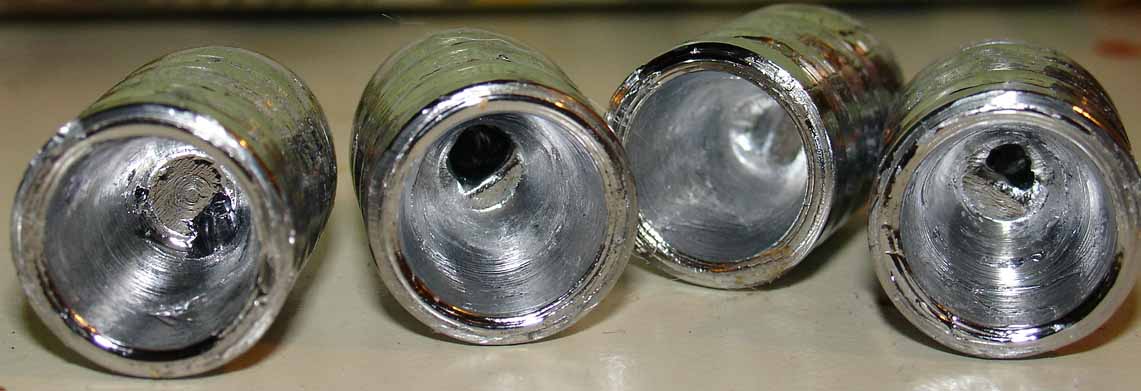Thanks to all of you for the input on my casting problem. Everyone posted good info as I read back through the thread.
I went over to uncles (eph289) and we played with it some more. Uncle cleaned the vent lines that I thought looked okay and found a bit of crud.
I cleaned the mold one more time with a solvent in case there was any lubricant out gassing.
We put a probe in the pot and saw that the lead temperature is running 768- 774 degrees F. This is using Uncles pot. I haven't checked mine yet.
We preheated the mold and plug using a propane torch, playing it all over.
We used a Lyman dipper and that fills the mold so much faster than my bottom pour. We would pour and keep a puddle on top of sprue plate to maximize heat and volume of lead for the mold to suck in when cooling.
Once we were getting good bullets, I tried skipping the step where we gave the base plug a re-heat in the propane torch between bullets.
That got us back into bubble land which went away after we went back to heating the plug between bullets.
We never got any frosting on the mold. Since this is pure lead (we think), I would think the lack of tin or antimony has something to do with that.
The base plug is one I made since the die was purchased w/o one cheap. I'm not entirely happy with how it fits at bottom of skirt, I am tempted to make one out of aluminum to see if it works better. I wouldn't mind thoughts on that idea.
It looks like I need to come up with a way to keep the plug hot, use a dipper, run the pot hot, and think pure thoughts.

Clutch







